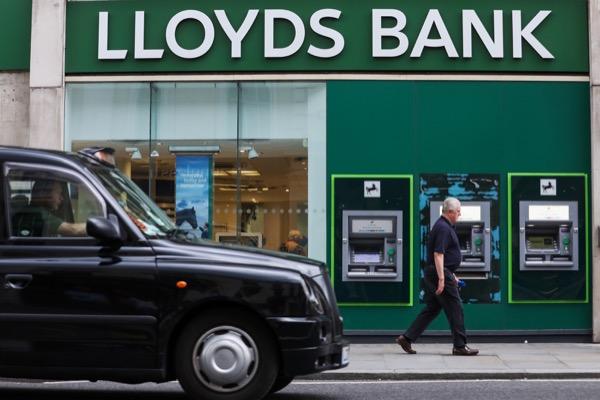FTSE 100: where next for Lloyds shares after strong full-year results?
Lloyds’ share price may break out in 2023 as net interest margins rise amid conservative full-year projections.
 Source: Bloomberg
Source: Bloomberg
Lloyds shares are consistently the most high-volume stock of the FTSE 100. The UK-focused bank, one of the FTSE 100 quartet, is also the largest mortgage lender in the UK through its various brands. Therefore, its results are closely watched as a barometer for the UKs financial sector, much in the same way as Tesco serves as a watermark for retail.
Fortunately, Lloyds shares have risen by circa 5% since releasing FY22 results on 22 February, as investors digest both the solid underlying numbers, and the perhaps underwhelming predictions for FY23.
It’s worth noting that Lloyds has been stubbornly trading within a typical range since May 2021, so a pullback below the 50p mark may be expected as it comes closer to its 52-week high.
FTSE 100: Lloyds share price
In headline figures, Lloyds saw statutory profits before tax rise by 80% year-over-year to £1.8 billion in Q4, roughly in line with analyst expectations. Revenue increased by 20% to £5 billion, beating expectations of £4.7 billion, and the FTSE 100 bank announced a £2 billion share buyback and 1,6p ordinary dividend, bringing total 2022 shareholder returns to a sizeable £3.6 billion.
Meanwhile, Q4 operating costs rose by 7% to £2.6 billion, partly due to the bank’s strategic investments, with Lloyds investing £900 million into its new growth strategy.
Politically, there could be problems in the pipeline. Lloyds was recently criticised by MPs for failing to pass on enough of the benefits of rising interest rates to savers, while CEO Charlie Nunn also has concerns over greater competition including from JPMorgan’s often market-leading Chase UK.
While CFO William Chalmers has promised to pass on more of the base rate rises, Nunn saw his remuneration increase sharply to £3.8 million, while the bank’s bonus pool also rose by 12% year-over-year to £446 million. Despite the cessation of bonuses in 2020, it’s likely that a conversation about a bank windfall tax — in line with Spain’s, may be in the offing.
Where next for Lloyds shares?
As rates rise amid an increasingly complex cost-of-living crisis, Lloyds was forced to put away £465 million in provisions for bad loans, substantially above the £380 million estimated by analysts. Nunn notes that 20% of its customers are now ‘having to take difficult decisions around their spending,’ including ‘turning towards value brands in weekly shopping and cancelling subscriptions to deal with increases in energy, food and fuel.’
The bank is predicting that UK house prices will fall by 7% in 2023, while simultaneously, 200,000 customers are exiting their fixed rate mortgages in the year. As the country’s largest mortgage lender has also invested heavily into its new Citra Living venture, a worse-than-expected shock to the real estate market could hit the Lloyds share price hard.
This is particularly problematic as the FTSE 100 bank is entirely domestically focused, unlike competitors including Barclays or HSBC, which have exposure to the international markets. The UK base rate is rising even as economic activity slows; a very unusual situation highlighting the danger that comes with double-digit inflation. And while higher rates may provide a short-term profit boost, longer term consumer debt stress could become challenging to navigate.
The bank has also warned that the benefits of rising net interest margin will likely fall through 2023. While the base rate now stands at 4%, Lloyd is predicting a NIM of greater than 3.05% in 2023, lower than both prior analyst expectations of 3.15% and the 3.20% forecast by rivals Barclays and NatWest.
As NIM was 3.22% in Q4 and the base rate will likely move higher than 4% as the Bank of England copycats Federal Reserve hawkishness, Lloyds could be accused of holding an overly cautious outlook — though under promising and overdelivering may make sense in this volatile environment. For context, Lloyds is predicting a return on total equity of circa 13% this year, below NatWest’s 14-16% target.
This leaves the popular FTSE 100 stock with high contending winds for 2023.
Trade and invest in over 17,000 UK, US and global shares from zero commission with us, the UK’s No.1 trading provider.*
Learn more about trading or investing in shares with us, or open an account to get started today.







0 Comments
Recommended Comments
There are no comments to display.
Create an account or sign in to comment
You need to be a member in order to leave a comment
Create an account
Sign up for a new account in our community. It's easy!
Register a new accountSign in
Already have an account? Sign in here.
Sign In Now